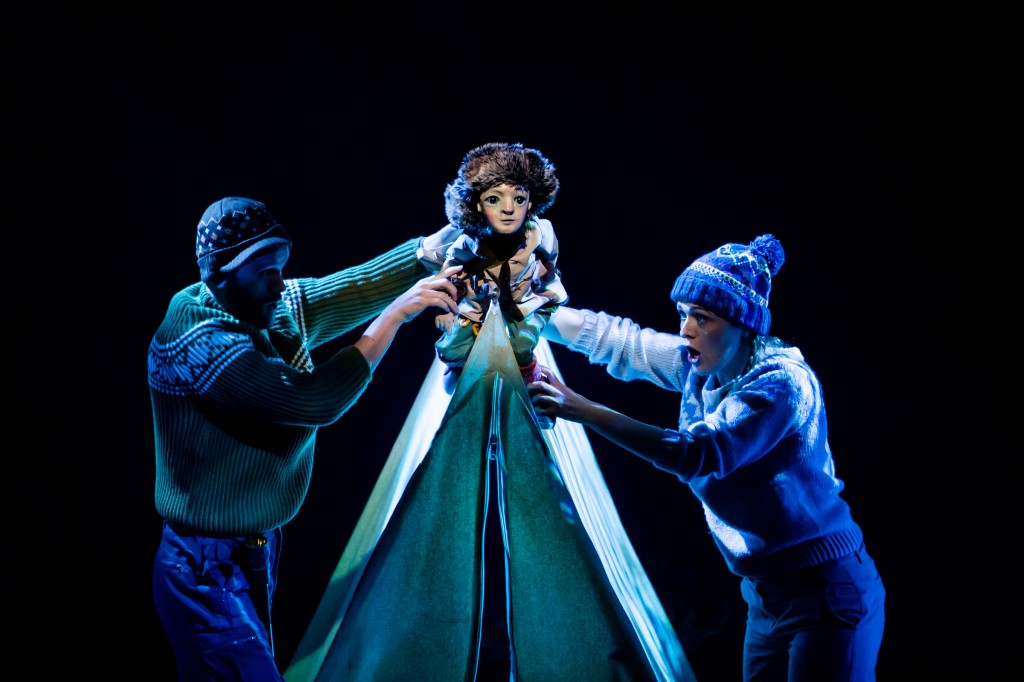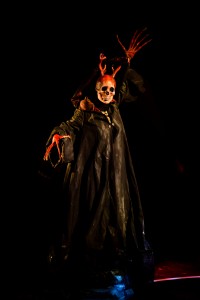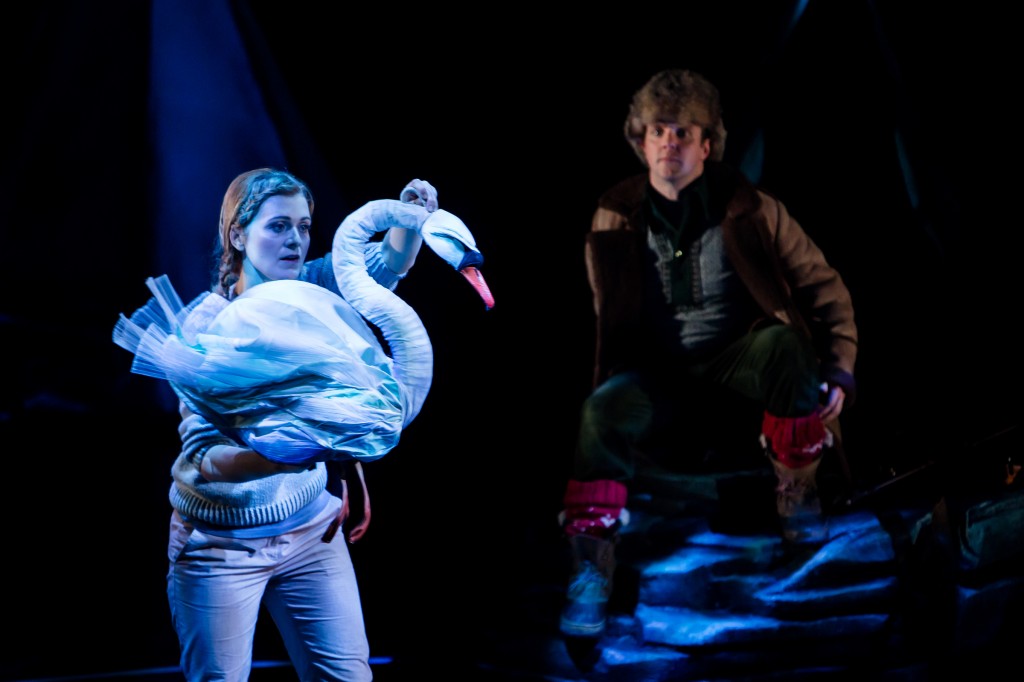Opera, magic, understanding: seeing Swanhunter
About two months ago, a friend and I were sat in our respective homes, skimming through events guides for things around London, and trying to decide what we might go to see. We are both lovers of opera, both keen to expand our repertoire knowledge, and both – crucially – extremely happy to venture into theatres to see shows we know absolutely nothing about. So it was that, through e-mail exchanges, a curiosity to hear more music by Jonathan Dove, and pretty much no further understanding of what we were letting ourselves in for, we found ourselves at the Linbury Theatre last week for the Opera North/The Wrong Crowd co-production Swanhunter.
Simply put, it was brilliant. Six superb singers played a host of characters in a host of hats, glasses, coats and wigs, whilst also being called upon to operate puppets and imitatate the movements of a swirling river. Meanwhile, at the corner of the stage and in full view of the audience, was the orchestra: violin, horn, accordion, harp, double bass and percussion. The ensemble playing was seamless, the timbres cleverly combined to conjure folk fiddlers, whinnying horses, barking dogs, the crash and clink of the blacksmith’s workshop. We were taken on a magical adventure with high drama, tension and laughter for all.

Christopher Diffey, Suzanne Shakespeare and Lemminkäinen. Photo: Richard Davenport
But the strengths of Swanhunter are far deeper than this. From the choice of libretto, through composition, staging and design, to the glossy pages of the programmes in our laps, the creators of this opera had thought long and hard about their audience. That audience, of course, included families, a number of curious adults like my friend and I, and children. The children were the most important, and then the rest of us – that’s as it should be, and these audience groups were carefully considered in the putting together of the show.

Death. Photo: Richard Davenport
Alasdair Middleton, the librettist, had settled on the Kalevala as his source, and like all good fairy tales the plot is not without its terrifying and gruesome elements. Jonathan Dove, the composer, had then conjured a musical world at once highly referential (the horses, dogs, blacksmith’s hammer, folk fiddlers and so on) but also wonderfully engaging. Most striking of all, in a plot which necessarily moves on apace, is the slow, repetitive and hypnoticially beautiful singing of the Swan on the river of Death, high and swooping. No wonder Lemminkäinen was too distracted to see Soppy Hat creeping up behind him with his bow and arrow. And, in addition to using a range of traditional voice types for certain parts – the hero a tenor, his mother a mezzo – Death spoke in a bass voice via the body of a soprano, an eerie voice-throwing exercise that only added to the terrifying weight of his presence.
And then there was the total understanding that The Wrong Crowd seem to have of the power of imagination. Of course a person can become a puppet, as Lemminkäinen does. Backpacks are dogs if you only know how to look at them. Elks and horses need not be complete pantomime outfits to be believable. A simple torch light, thoughtfully deployed, is a dancing spirit to anyone who is paying attention. It was beautiful, evocative, and completely convincing.
Let’s be honest here. Opera is, at best, a genre that needs help. Not because it is broken or lacking, but because it requires us to step into the world that is presented to us. No one with tuberculosis can actually sing for four hours. Minimalist productions of The Ring, in which the set consists solely of wooden blocks, become nothing more than nonsensical concert performances if we are not prepared to go along with them. And good opera, really good opera, makes it clear to us all that the characters have to sing. Not because it’s a show, or an art form, or a clever device: because it’s inevitable. Even the Swanhunter programme was written for its youthful audience to engage with – biographies recast as introductions to the team and their favourite fairy tales, Jonathan Dove’s explanation of why opera is so overwhelming and beautiful, Alasdair Middleton’s simple and wonderful observation that ‘maybe some stories just prefer to be sung.’
For those of us who adore opera – all kinds of opera – and see the current state of funding, political priorities and education as a serious threat to its future, productions like Swanhunter are a beacon of hope. They represent the love and labour of a group of people who understand the power of the medium, and have total respect for their young audience. They put all of the apparatus in place (voice types, staging, orchestra, printed programme, heck, even feedback forms in unpretentious language) for children to engage with the traditions and conventions of opera without fear, and without patronising them. The end result? The children in the audience were transfixed. And there is a very special kind of silence that is created by children watching something – the silence of utter absorption and belief in the powerful truth of what is in front of them. It made us all watch and listen harder. There is no greater achievement for a production, or compliment for its creators, than that.
Swanhunter has now finished its run at the Linbury Theatre, but will be on tour throughout April and early May. You can find details of upcoming shows here.

Suzanne Shakespeare as the Swan, and Adrian Dwyer as Lemminkäinen. Photo: Richard Davenport

